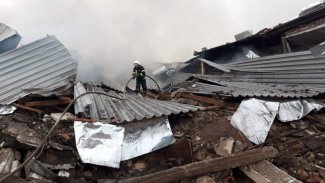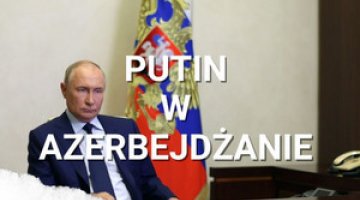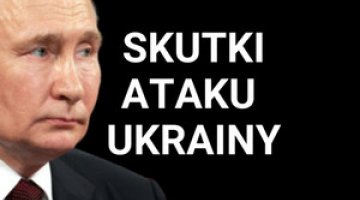Hydroelectric plants are under fire. 251st day of the war

Russian forces have intensified offensive operations in the Donetsk Oblast south and east of the Velyka Novosilka–Pavlivka–Marinka line but have not achieved significant success. They also renewed attacks on Ukrainian positions west of Donetsk, in the Avdiivka and Horlivka areas and along the road to Kramatorsk. In addition, further aggressor assaults on Bakhmut and towns north-east of it and east of Siversk were to fail. In Luhansk Oblast, Ukrainian troops were to repel the enemy assault on the Zherebets River line and along the border with Kharkiv Oblast north-east of Svatove. The invaders were also to attack unsuccessfully from Russian territory north of Kharkiv.
Local reports indicate that Ukrainian forces have not ceased their attempts to disrupt enemy defences on the border of the Kharkiv and Luhansk oblasts north-east of Kupiansk, north of Svatove, north-west of Kreminna and north and west of Kherson. The Ukrainian army provides twofold information on enemy troop movements on the right bank of the Dnieper. They are supposed to reinforce the grouping by redeploying newly mobilised troops to villages south of the combat areas and preparing the evacuation of some subunits by securing crossing assets. The Russians were also to withdraw military equipment from Chornobaivka airfield on the outskirts of Kherson.
On 31 October, there was another massive missile attack on Ukraine’s critical infrastructure facilities. For the first time, its targets were the Dnieper (Hydroelectric [Power] Station) in Zaporizhzhia, Dniester (Pumped Storage Power Station) in Chernivtsi Oblast and Kremenchuk (Hydroelectric Power Plant) in Svitlovodsk in Kirovohrad Oblast. Power infrastructure around Kyiv, in Kharkiv, Dnipro, and Pavlohrad, and in Cherkasy, Poltava and Vinnytsia oblasts also suffered. In addition, in the previous days, Russian rockets fell on infrastructure and industrial facilities in Kramatorsk, Kryvyi Rih, Mykolaiv, Poltava and Zaporizhzhia. Both sides continued to shell and bombard enemy army positions and facilities along the line of contact (and the Russians also in the border regions of Chernihiv and Sumy oblasts).
Also, on 31 October, the Ukrainian side announced its greatest success in countering a hostile missile attack. In the first communiqué, the General Staff announced that 45 out of 55 missiles had been shot down, and in the next – that 60 missiles had been used by the aggressor (it was not stated how many had been downed). Messages from other ministries also gave conflicting data. In contrast, Commander-in-Chief of the Armed Forces General Valerii Zaluzhnyi did not indicate the number of missiles shot down but provided a detailed account of the weapon systems used by the Russians in the attack (55 Kh-101 cruise missiles and one Kh-59 fired from aircraft, 22 missiles fired from S-300 systems, four Iranian Shahid-136 drones and one Russian Lancet-3 kamikaze drone).
Military intelligence chief General Kyrylo Budanov and Air Force Command spokesman Colonel Yuriy Ihnat stated that Russia is about to receive Fateh-110 and Zolfagar ballistic missiles from Iran with ranges of 300km and 700km, respectively. According to Ihnat, these are to be deployed ‘on the northern border of Ukraine’, suggesting the use of Belarus. The colonel stressed that Kyiv does not have the means to repel an Iranian missile attack and once again appealed to the west to donate modern air defence systems. Ukrainian military intelligence also reported that Russia would receive another batch of more than 200 Shahed-136 kamikaze drones from Iran in early November, the Mohajer-6 and – for the first time – the Arash-2.
Slovenia handed Kyiv 28 M-55S tanks (a modernised version of the Soviet T-55s with a 105 mm cannon), for which it received 35 large trucks and five tankers from Germany. Canada has started supplying 39 armoured cars to the Ukrainian army. Italy is to supply between 20 and 30 M-109L self-propelled howitzers and confirmed that it had earlier informally handed over six PzH 2000 howitzers, two multiple rocket launchers and 10 M-113 tracked transporters. Lithuania has refurbished 12 PzH 2000 howitzers (the Lithuanians had previously refurbished two Panzerhaubitze 2000s). The Pentagon has confirmed that Ukraine will receive its first two NASAMS systems (out of a promised eight) in November. Instructors from Norway are currently due to complete the training of around 100 Ukrainian soldiers in using these systems (the course is taking place in Germany).
Ukraine’s Permanent Representative to the UN, Sergiy Kyslytsya, presented information on the military assistance the Ukrainian army has received since January this year. The value of the support received from 29 countries is €41.3 billion (more than seven times the Ukrainian defence ministry’s budget this year). Kyslytsya pointed out that this is only 14% less than Russia’s military budget.
In turn, according to a study by the Kiel Institute for World Economics, the first three places in terms of the amount of aid provided in relation to their defence budget were taken by the Baltic states (Latvia – 41%, Estonia – 37%, Lithuania – 16.7%), with Poland in fourth place (15%). Of the leading NATO countries, the UK is best (6.7%), the USA is 14th (3.6%), Germany 16th (2.4%) and France 22nd (0.5%).
On 2 November, a meeting of the collegium of the Russian and Belarusian defence ministries took place under the chairmanship of Russian Defence Minister Sergei Shoigu. It discussed plans to guarantee the military security of the Union State for 2022–2024, the principles of interaction between the command bodies of the two countries’ armed forces and plans to counter ‘attempts to falsify history’. A joint exercise, ‘Union Shield 2023,’ was also announced, likely to occur in autumn 2023. Shoigu repeated disinformation claims about the growing threat to Belarus’ security from NATO.
On 30 October, Alexander Lukashenko instructed the defence ministry to conclude an agreement regulating the operation of existing Russian-Belarusian military training centres. On the same day, Minsk declared that two such centres were in operation (Belarusians confirmed information about their creation in October 2021; at the time, they announced that three were planned to be opened altogether). The first, located in Belarus, deals with air and air defence cadres, missile troops and artillery. The second operates on Russian territory, and most likely trains armoured equipment crews.
According to independent Belarusian media, Russian engineering army units are being sent to the country to build barracks and other military facilities. The work is being carried out as part of creating logistical facilities for a joint regional grouping of Russian and Belarusian troops. Estimates are that 20,000 Russians will eventually arrive in the country. Most of the barracks are to be built in the Brest Oblast. Belarusian airbases in Lida and Baranavichy are already under the control of the Russian Armed Forces.
General Budanov said there is currently no threat of invasion from Belarus, where some 4,300 Russian troops are to be stationed. He added that the situation could change if Russia loses Kherson. Then it is to be expected that the invaders will redeploy larger forces to Belarus to threaten western Ukraine. On 30 October, the Ukrainian General Staff announced that Russian soldiers were being deployed in the Brest area and included units of so-called ‘kadyrovtsy’. According to the staff, the enemy is also looking for ways to replenish troops at the expense of private military companies. The Russian command was said to have decided to withdraw a contingent of private military campaigns from the Republic of Mali.
On 1 November, commenting on the completion of ‘partial mobilisation’, Minister Shoigu reported that 87,000 of the 300,000 mobilised had been sent to the front. The General Staff of the Russian Federation stressed that more than 15,000 volunteers had signed up to take part in the fighting. On the same day, autumn conscription for basic military service began in the country, delayed by a month due to mobilisation. 120,000 people are planned to be conscripted, 7,500 fewer than at the same time last year.
Commentary
- Shoigu’s information about the implementation of ‘partial mobilisation’ and Ukrainian reports about the Russians’ redeployment of successive groups of newly mobilised soldiers to combat areas confirm the significant strengthening of the aggressor’s forces. If the figures provided by the head of the Russian defence ministry are true, the size of the invading army may have increased by half – to nearly 250,000 troops – in less than a month (at the beginning of October, the Ukrainian command estimated the total enemy force at 162,000). This fact should be considered one of the main reasons for the slowdown of the Ukrainian offensive. It remains an open question to what extent the remaining mobilised (over 200,000) will be used to replenish the fighting units and to what extent they will serve as cadres for the newly formed subunits. By reinforcing the units at the front with new soldiers, the Russians are strengthening the defence but cannot deprive the Ukrainians of the initiative they regained in September. This could only be achieved by bringing more new troops into the fight, allowing the aggressor to resume offensive operations.
- Russia’s repeated attacks on Ukraine’s critical infrastructure are resulting in – in addition to growing electricity and water supply problems – increasing challenges for Kyiv’s information policy. The consequence of trying to reconcile the need to constantly maintain morale – which is to be served by reports of air defence successes – with steps to acquire modern air defence systems from the west is sometimes the internal contradiction of the Ukrainian message. Inconsistencies can be seen between the number of enemy missiles and the number of targets hit. It should be stressed that the Ukrainian communiqués following the 31 October attacks did not mention the enemy’s use of the easiest-to-down kamikaze drones, which could explain the unusually high declared number of shoot-downs.
- Ambassador Kyslytsya’s communiqué highlights the importance of military support from the West for Ukraine’s defence, while SIPRI’s data shows the significant disparity in the commitment of individual donors. Without Western assistance, the military would not only be unable to push the enemy out of the already recaptured territory. However, it would also lack the means to conduct strictly defensive operations. The figures given by Kyslytsya suggest that, as early as spring, the burden of providing the Ukrainian army with equipment and other war materials was transferred from its resources to the west. Since then, the Ukrainian Armed Forces have entirely depended on its support. Disclosures in recent days about Italy’s undisclosed supply of heavy weaponry and Sweden’s announcement to start providing such assistance allow us to assume that supplies will not only be maintained but will gradually increase.





